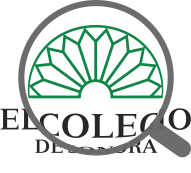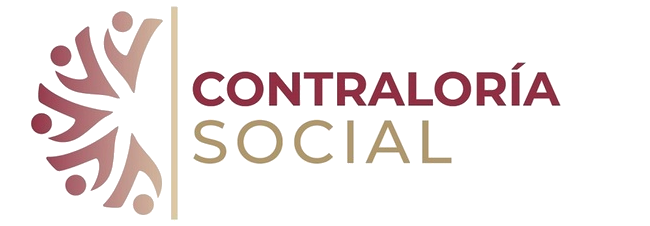Mostrar el registro sencillo del ítem
Agricultura y manejo sustentable del acuífero de la Costa de Hermosillo
| dc.contributor.author | Lutz Ley, América N. | |
| dc.contributor.author | Moreno Vázquez, José Luis | |
| dc.contributor.author | Salazar Adams, Alejandro | |
| dc.coverage.spatial | MX-SON | en-US |
| dc.creator | SALAZAR ADAMS, JESUS ALEJANDRO; 40399 | |
| dc.creator | MORENO VAZQUEZ, JOSE LUIS; 80244 | |
| dc.creator | Lutz-Ley, America N.;#0000-0002-7257-616X | |
| dc.date | 2012-01-01 | |
| dc.date.accessioned | 2022-06-28T19:42:42Z | |
| dc.date.available | 2022-06-28T19:42:42Z | |
| dc.date.issued | 2012-01-01 | |
| dc.identifier | https://regionysociedad.colson.edu.mx:8086/index.php/rys/article/view/411 | |
| dc.identifier | https://doi.org/10.22198/rys.2012.3.a411 | |
| dc.identifier.uri | https://regionysociedad.colson.edu.mx:8086/index.php/rys/article/view/411 | |
| dc.identifier.uri | https://doi.org/10.22198/rys.2012.3.a411 | |
| dc.identifier.uri | https://repositorio.colson.edu.mx/handle/2012/45682 | |
| dc.description.abstract | The Costa de Hermosillo aquifer is one of the most overexploited in Mexico. In spite of this, it is still used for the production of low value crops with high water consumption. In this article, the optimum crop pattern was estimated by means of four linear programming models, based on the restriction imposed by aquifer recharge. According to the results, it is possible to generate 90% of the current agricultural production value using one third of the water being drawn. The results also indicate the importance of subsidy elimination, agricultural reconversion and use of efficient irrigation techniques as effective measures for achieving sustainable aquifer management. | en-US |
| dc.description.abstract | El acuífero de la Costa de Hermosillo es uno de los más sobreexplotados de México. A pesar de ello, se sigue utilizando para cultivos de bajo valor y alto consumo de agua. En el presente artículo se estimó, mediante cuatro modelos de programación lineal, la asignación óptima de cultivos con base en la restricción que impone la recarga del acuífero; y es posible generar 90 por ciento del valor de la producción agrícola actual con alrededor de una tercera parte del volumen extraído. Los resultados permiten indicar la importancia de la eliminación de subsidios, de la reconversión agrícola y del uso de técnicas de riego eficientes, como medidas para lograr el manejo sustentable del acuífero. | es-ES |
| dc.format | application/pdf | |
| dc.language.iso | spa | |
| dc.publisher | El Colegio de Sonora | es-ES |
| dc.relation | https://regionysociedad.colson.edu.mx:8086/index.php/rys/article/view/411/450 | |
| dc.rights | Derechos de autor 2017 Alejandro Salazar Adams, José Luis Moreno Vázquez, América N. Lutz Ley | es-ES |
| dc.rights | https://creativecommons.org/licenses/by-nc/4.0/ | es-ES |
| dc.rights | info:eu-repo/semantics/openAccess | es-ES |
| dc.source | 2448-4849 | |
| dc.source | 1870-3925 | |
| dc.source | región y sociedad; No. 3 (2012): Número especial | en-US |
| dc.source | región y sociedad; Núm. 3 (2012): Número especial | es-ES |
| dc.subject | Sustainable water management | en-US |
| dc.subject | Linear programming | en-US |
| dc.subject | Aquifers | en-US |
| dc.subject | Agricultural profitability | en-US |
| dc.subject | Agricultural efficiency | en-US |
| dc.subject | Irrigation | en-US |
| dc.subject | Manejo sustentable del agua | es-ES |
| dc.subject | Programación lineal | es-ES |
| dc.subject | Acuíferos | es-ES |
| dc.subject | Rentabilidad agrícola | es-ES |
| dc.subject | Eficiencia agrícola | es-ES |
| dc.subject | Irrigación. | es-ES |
| dc.subject | Ciencias Sociales | |
| dc.subject.lcsh | Sustainable water management | en-US |
| dc.subject.lcsh | Linear programming | en-US |
| dc.subject.lcsh | Aquifers | en-US |
| dc.subject.lcsh | Agricultural profitability | en-US |
| dc.subject.lcsh | Agricultural efficiency | en-US |
| dc.subject.lcsh | Irrigation | en-US |
| dc.subject.lcsh | Manejo sustentable del agua | es-ES |
| dc.subject.lcsh | Programación lineal | es-ES |
| dc.subject.lcsh | Acuíferos | es-ES |
| dc.subject.lcsh | Rentabilidad agrícola | es-ES |
| dc.subject.lcsh | Eficiencia agrícola | es-ES |
| dc.subject.lcsh | Irrigación. | es-ES |
| dc.title | Agricultura y manejo sustentable del acuífero de la Costa de Hermosillo | es-ES |
| dc.type | info:eu-repo/semantics/article | |
| dc.type | info:eu-repo/semantics/publishedVersion | |
| dc.audience | generalPublic | |
| dc.identificator | 5 |
Ficheros en el ítem
| Ficheros | Tamaño | Formato | Ver |
|---|---|---|---|
|
No hay ficheros asociados a este ítem. |
|||










